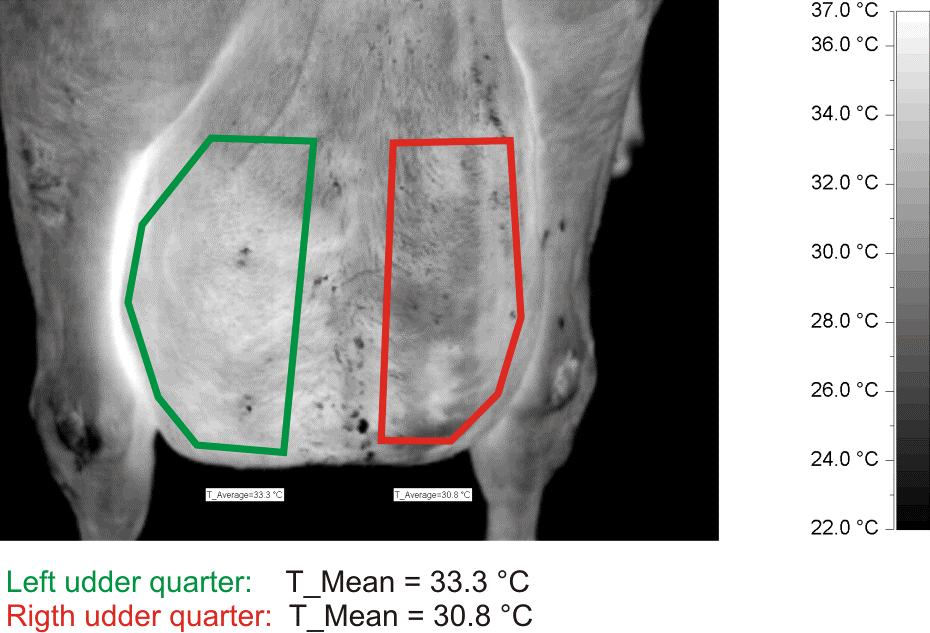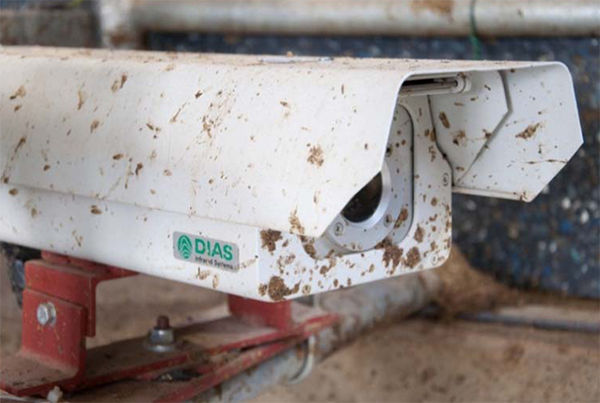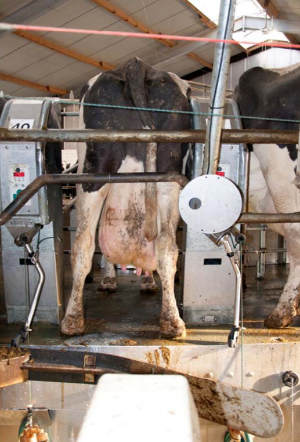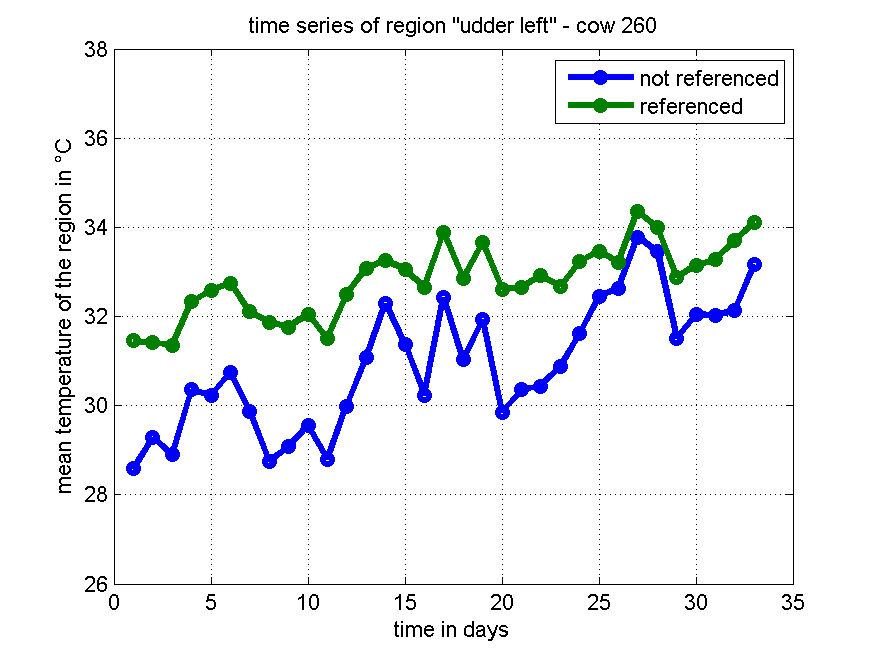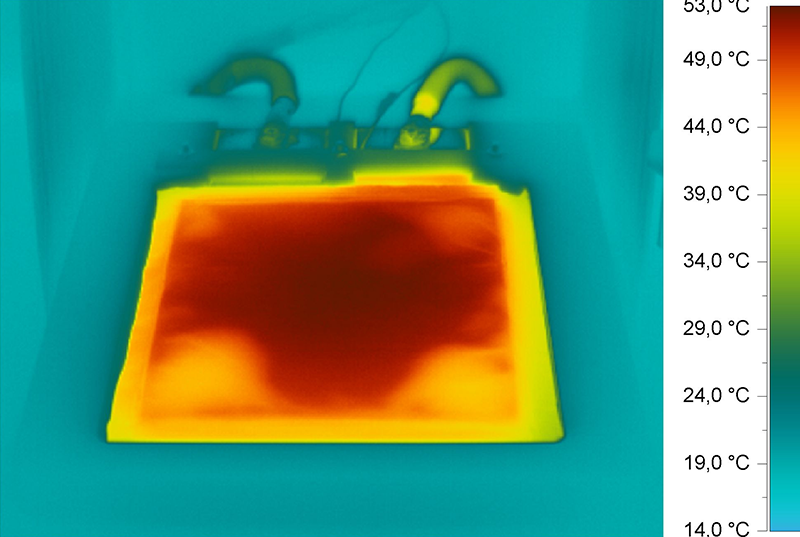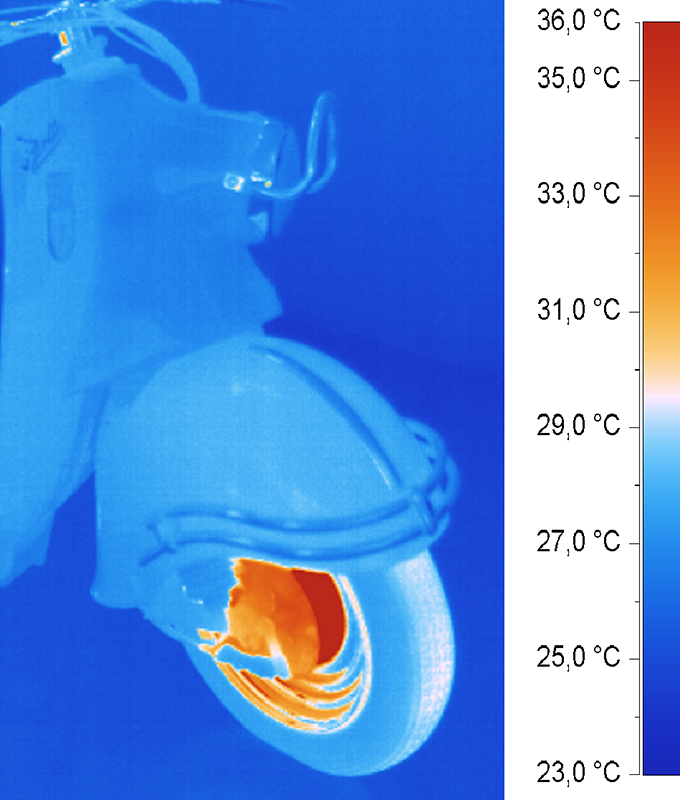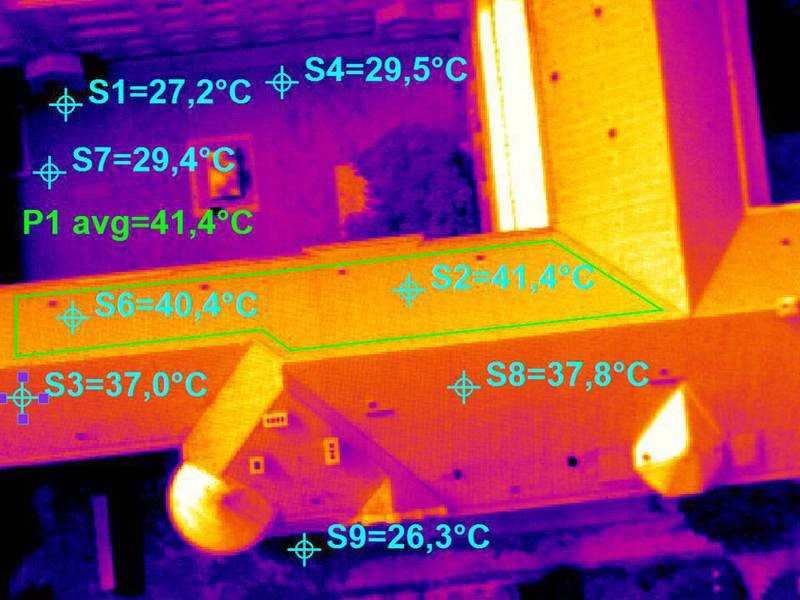Outset
Infrared thermography (IRT) has been used for applications in veterinary medicine – primarily in research projects – since the 1960s. Until today, however, the use of IRT as a standard procedure has only been customary in equestrian sports and for zoo animals.
During the analysis of infrared images, the existence of symmetrical temperature patterns (comparison of left and right side) can be helpful for making relevant diagnostic observations. High-quality IR cameras without any further enhancements are usually sufficient for this purpose.
Often, however, it is desirable to monitor the temperature development of a certain object, a cow udder, for example, over a longer period of time in a chronological sequence. In order to reach a medical diagnosis, it is necessary to observe the temperature development over a course of several days. In this case, the temperature has to be measured absolutely precisely, similar to measuring the body temperature using a thermometer. However, even high-quality IR cameras are usually not capable of reaching this precision without further technical adjustments due to their sensor drift.
